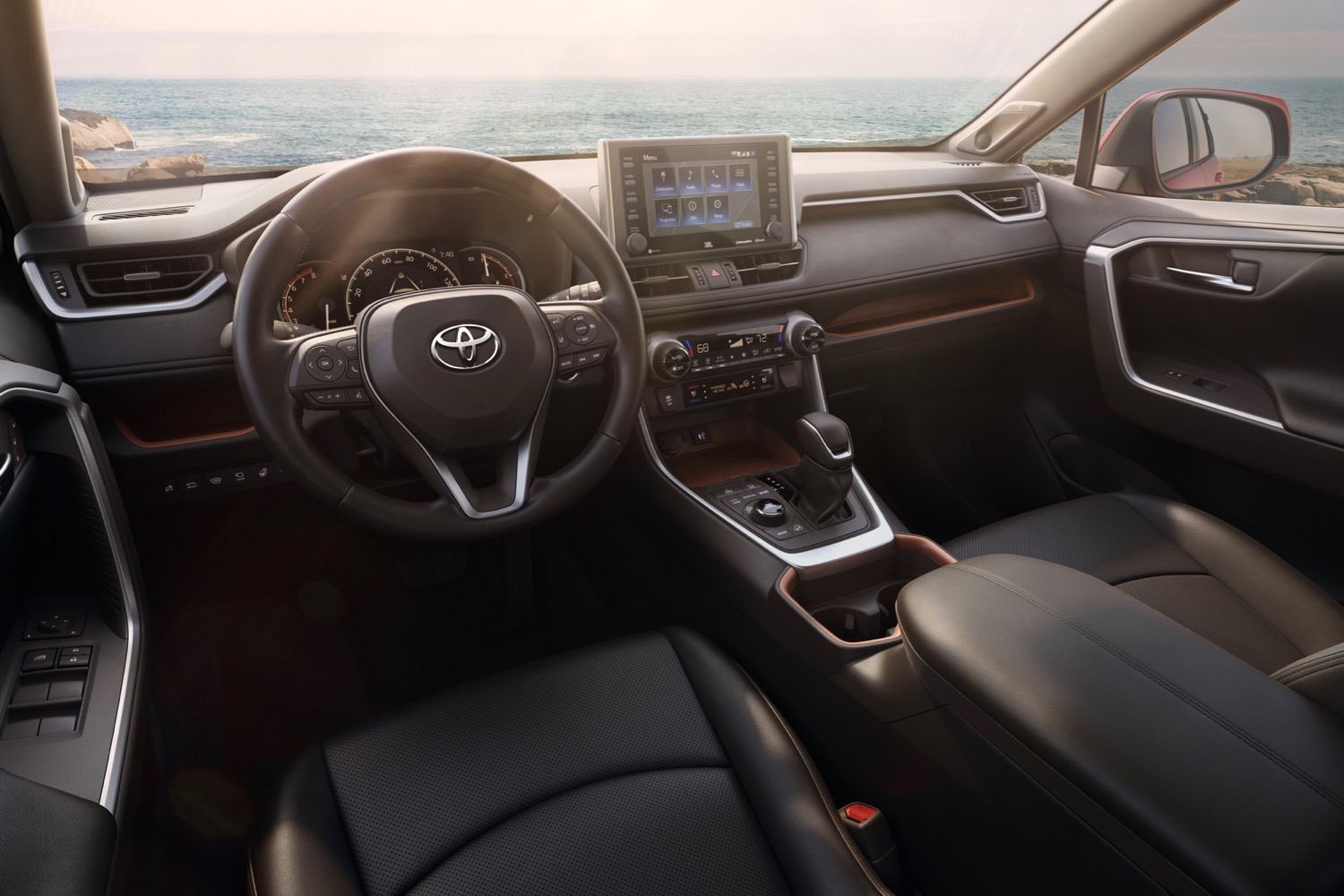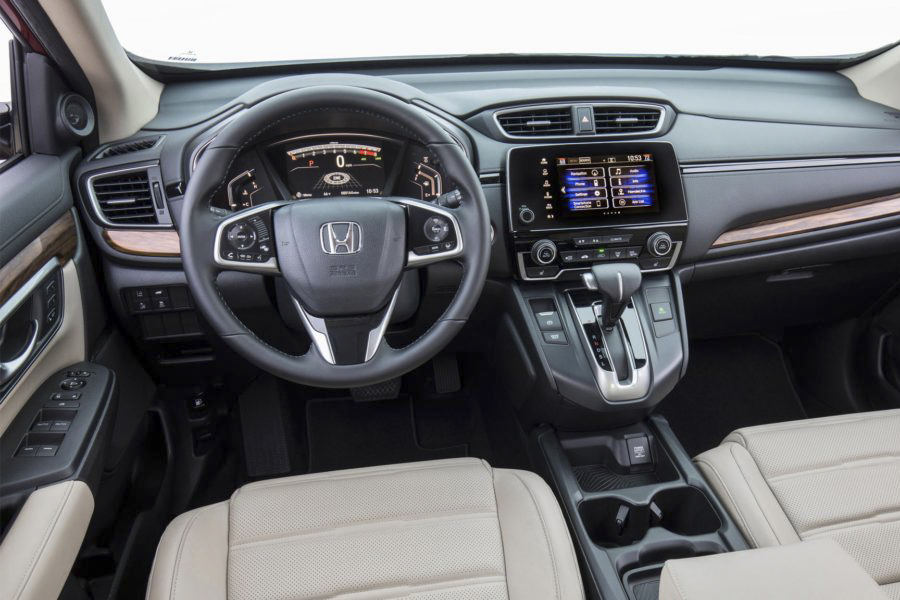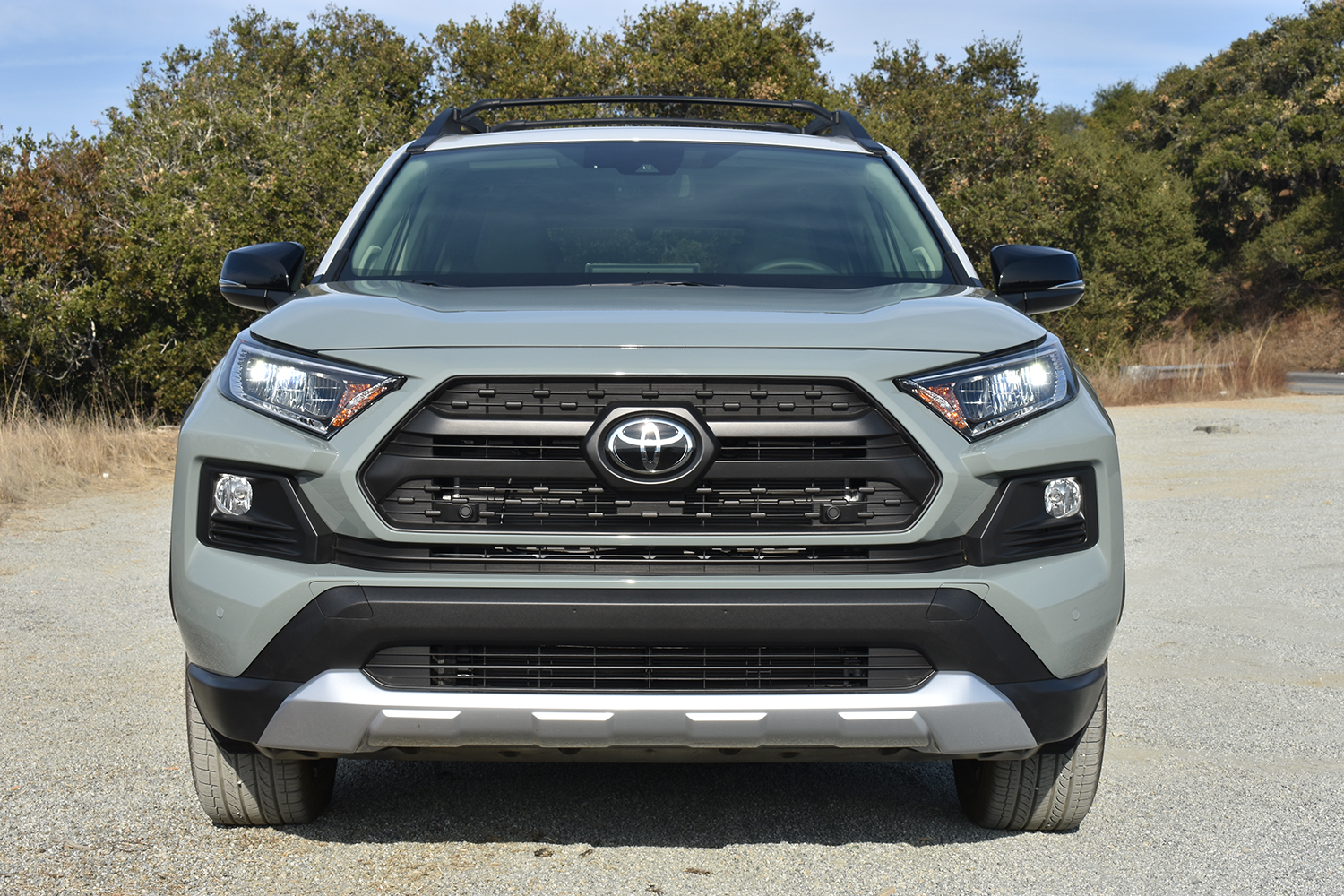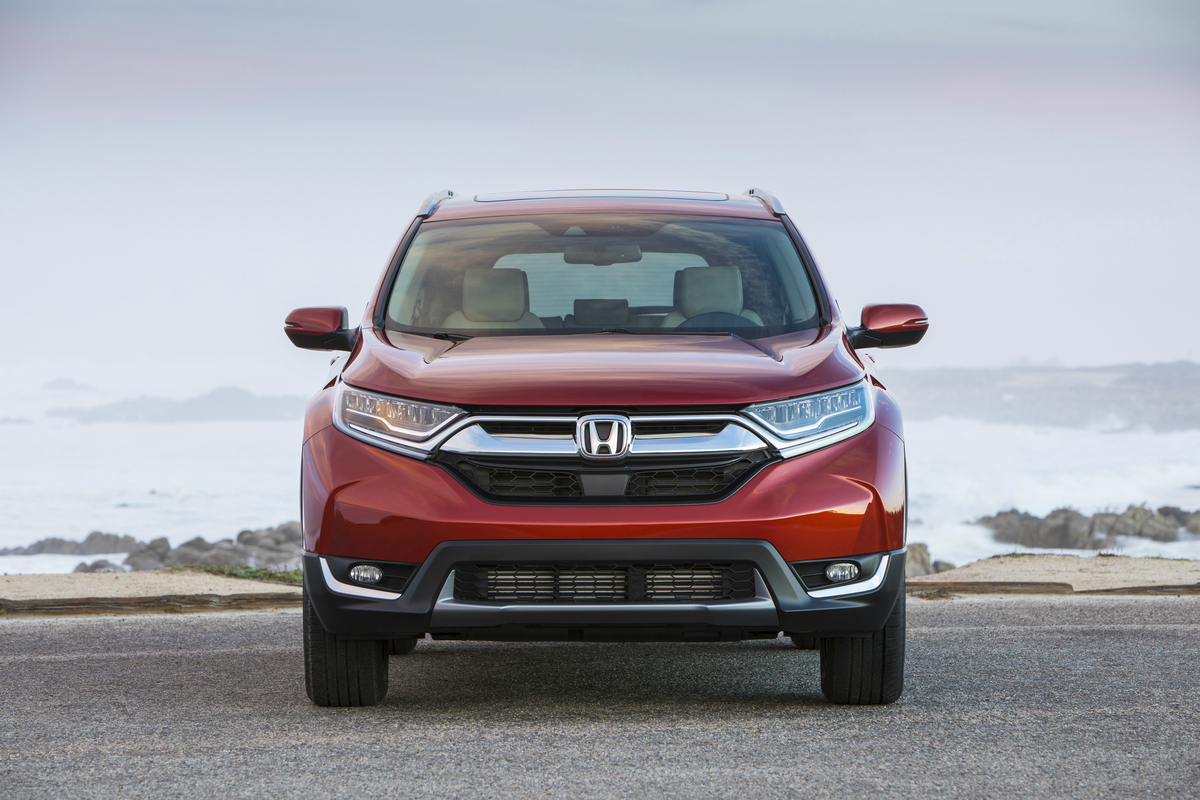Toyota’s RAV4 and Honda’s CR-V were rivals well before the crossover became the go-to family car across America. Both have evolved considerably over the past two decades to meet the needs of a growing group of buyers, and they earned a spot on the list of the best-selling cars in the U.S. along the way. They overlap in several key areas, including their overall dimensions and their starting price, but they’re also very different from certain angles.
Read on to find out how these two popular crossovers compare on paper.
Further reading
Tech features
Even the cheapest RAV4 gets a 7-inch touchscreen, Bluetooth connectivity, and a six-speaker sound system. Toyota finally offers Apple CarPlay and, starting with the 2020 model year, Android Auto. Better-equipped models benefit from an 8-inch touchscreen and an 11-speaker sound system made by JBL that’s sure to please audiophiles. Buyers can also order the RAV4 with a digital rearview mirror, which appears on a Toyota for the first time, plus a wireless phone charger and up to five USB ports. In other words, the RAV4 speaks tech fluently.
The CR-V comes standard with Bluetooth connectivity, a basic four-speaker sound system, and a relatively small 5-inch screen embedded in the dashboard. The base model offers what we’ll call, politely, rental car-level technology. Stepping up to the next trim in the hierarchy affords you a better sound system with six speakers, a seven-inch display, Apple CarPlay and Android Auto compatibility, plus USB charging ports in the second row.
Performance and fuel economy
The RAV4’s base engine is a naturally aspirated (meaning not turbocharged) 2.5-liter, four-cylinder tune to deliver 203 horsepower and 184 pound-feet of torque. It shifts through an eight-speed automatic transmission. Front-wheel drive comes standard, and all-wheel drive is offered at an extra cost. The EPA rates the RAV4 at 26 mpg in the city, 35 mpg on the highway, and 30 mpg in a combined cycle. Those figures are pretty good for the segment, but Toyota has a fuel-saving trick up its sleeve.

Efficiency-minded buyers can order a gasoline-electric hybrid powertrain that teams the aforementioned four-cylinder engine with three electric motors linked to a lithium-ion battery pack. The system’s total output of 219 hp goes to the RAV4’s four wheels through a continuously variable transmission (CVT). The Hybrid is more expensive than the standard RAV4, but it returns Toyota-estimated fuel economy figures of 41 mpg in the city, 37 mpg on the highway, and 39 mpg combined. It delivers improved performance, too.
If that’s not enough, there’s a plug-in hybrid model named Prime around the corner. It will offer up to 39 miles of electric-only driving and 302 hp (!) when simultaneously powered by electricity and gasoline.
Let’s walk across the street to Honda. The old 2.4-liter engine is gone, so the CR-V comes standard with a downsized, 1.5-liter, four-cylinder that uses a turbocharger to pump out 190 hp and 179 lb-ft. of torque. Peak torque remains available over a broad band that stretches from 2,000 to 5,000 rpm so the turbo four delivers linear acceleration. Front-wheel drive and a CVT come standard; all-wheel drive is available at an extra cost. The EPA predicts buyers who get the optional engine will see 27 mpg in the city, 33 on the highway, and 27 in a combined cycle.
Honda added a hybrid powertrain for the 2020 model year. It relies on a 2.0-liter four-cylinder with VTEC technology and two electric motors to deliver 212 hp and 232 lb-ft. of torque to the four wheels via a CVT. The shift paddles behind the steering wheel let the driver control the regenerative braking system. We took it for a spin, and concluded “it’s plain nice to drive,” though its gas mileage falls a little short of the competition. It’s rated at 35 mpg in the city, 40 mpg on the highway, and 38 mpg combined. The RAV4 remains the efficiency champ, though not by much.

Interior and exterior design
The RAV4 has come a long way since the original, first-gen model made its North American debut in 1995. It’s grown in size considerably over the course of five generations. Introduced in 2018, the current model takes on a more traditional SUV look than its predecessor, with angular lines, a frowning grille, back exterior cladding, and other elements cribbed from the Toyota 4Runner and the futuristic FT-AC concept. Under the skin, the RAV4 rides on the same Toyota New Global Architecture platform as the Camry and Prius, among other models.
The original CR-V arrived in America in February 1997 with one mission in mind: Take down the RAV4. Like its rival, it has evolved from a utilitarian off-roader to a family-friendly soft-roader and it has swelled over the course of five generations. In terms of styling, it shares styling cues with other members of the Honda lineup like the newest Accord and the 10th-generation Civic. Designers streamlined the cabin layout by removing as many buttons and switches as possible. They took the volume knob out, too, but later brought it back by popular demand.
The CR-V arrived in America in February 1997 with one goal:
Take down the RAV4
Right-sized, the RAV4 measures 180.9 inches from bumper to bumper, 67.2 inches tall, and 73 inches wide (excluding the mirrors). It offers 37.5 cubic feet of trunk space as a five-seater and 69.8 cubic feet as a two-seater. The similarly sized CR-V stretches 180.6 inches long, 66.5 inches tall, and 73 inches wide. Trunk space checks in at 39.2 cubic feet with five passengers on board and 75.8 cubes with the rear seats folded flat.
Safety
In addition to stability and traction control systems, the RAV4 boasts dual front and side airbags for the front passengers, a knee airbag for the driver, and curtain airbags for the two rows of seats. Every RAV4 regardless of price also comes with Toyota Safety Sense P (TSS-P), which bundles driving aids like a pre-collision system with pedestrian detection, a lane departure warning system, automatic high beams, and dynamic cruise control.
Honda recently added more safety features to the CR-V, so every trim comes with stability and traction control, a wide panoply of airbags, plus electronic driving aids like lane-keeping assist, automatic high beams, and adaptive cruise control. You’ll need to step up to the EX trim level to unlock blind spot detection with cross-traffic alert.
Pricing
The RAV4 lineup includes six trim levels. Named LE, the most affordable trim level costs $26,050. The other trim levels are called XLE, XLE Premium, Adventure, Limited, and TRD Off-Road, respectively. Plan on spending $35,780 for a top-of-the-line RAV4, which puts the crossover in entry-level luxury car territory. The hybrid starts at $28,500 and ends at $37,030.
CR-V prices start at $25,150 and end at $33,350. The lineup is divided into four trim levels named LX, EX, EX-L, and Touring, and each one is offered with two- or four-wheel drive. Honda adopted a more basic packaging solution than Toyota but both nameplates ultimately offer roughly the same set of features. The notable exceptions are the RAV4’s Adventure trim, a looks-focused model Honda hasn’t answered to, and the TRD Off-Road package. If it’s the hybrid model you’re after, plan on spending between $27,850 and $36,050.
Key rivals
The Toyota RAV4 and the Honda CR-V compete in the same segment. Other options buyers should look at are the Chevrolet Equinox, the Subaru Forester, the Mazda CX-5, and the popular Ford Escape.
Editors' Recommendations
- The best SUVs for families
- Honda HR-V vs. Honda CR-V
- 2021 Honda Pilot vs. 2021 Toyota Highlander
- 2020 Toyota Camry vs. 2020 Honda Accord
- SUVs vs. crossovers: What’s the difference?










